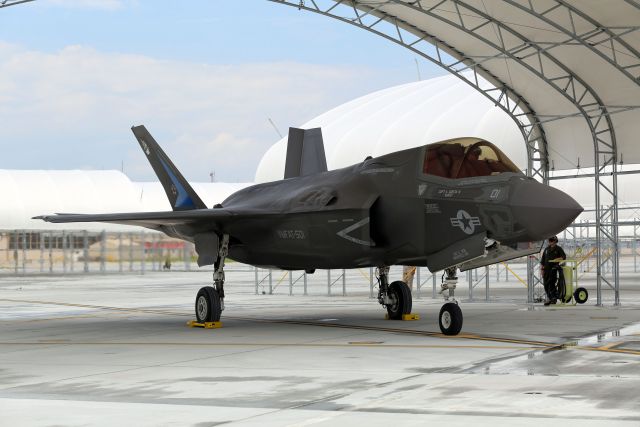Breaking news
U.S. Marines Corps ready to start the first F-35B Joint Strike Fighter pilot training course.
| a | |||
| |
|||
World
Aviation Defense and Security News - United States |
|||
| U.S. Marines Corps ready to start the first F-35B Joint Strike Fighter pilot training course | |||
The
U.S. Pilot Training Center and Marine Fighter Attack Training Squadron
501 are slated to kick off the first F-35B Lightning II Joint Strike Fighter
pilot training course, also known as the F-35B Safe for Solo course, aboard
Marine Corps Air Station Beaufort, October 6. |
|||
 The first F-35B Lightning II Joint Strike Fighter assigned to Marine Fighter Attack Training Squadron 501 arrived at Marine Corps Air Station Beaufort on July 17 |
|||
The three-month
course is the formal instruction period that trains and certifies pilots
to fly the F-35B. Upon successful completion, pilots will earn the Military
Occupational Specialty 7518, F-35B pilot. Throughout the course, Marine
aviators will learn everything from basic familiarization for flying
the F-35B to various missions and weather conditions.
“During a Hornet or Harrier course, the majority of the training is in the mechanics of the jet such as how to work the radar,” said Maj. Carlton A. Wilson, the executive officer for VMFAT-501. “[The F-35B] is so much easier to fly. We are able to spend less time teaching about the mechanics of flying the jet, and start teaching advanced concepts at a much earlier stage in training.” According to Wilson, by spending less time teaching about the mechanics of flight and spending more time teaching concepts, F-35 pilots will be capable of making independent decisions at an earlier stage in their career which allows for decentralized execution and aligns well with the Marine Corps warfighting philosophy. The joint mission of VMFAT-501 and the PTC is to train pilots to go out to the operating forces in order to execute the missions assigned to the F-35B. “The PTC teaches pilots about the F-35B in a classroom and flight simulator setting taught by civilian instructors with prior military flight experience,” Wilson said. “After learning new concepts in the classroom and successfully applying them in the flight simulator, the pilots will take what they learned to the squadron. At the squadron, they will apply the newly learned fundamentals by actually flying the F-35B under the supervision of active-duty military instructors.” The first pilot class will consist of two aviators with prior Hornet or Harrier experience. After the first class of aviators graduate, class sizes will increase gradually to approximately 20 Marines. Within the next year, Prowler pilots and new Marine Aviators will begin filling seats in the class which will consist of a more rigorous course of instruction. “Most of the pilots coming through the course at the start will have gone on at least one deployment in either the Harrier or the Hornet, and have a number of hours and different qualifications under their belt,” Wilson said. “At the end of the day, for pilots with prior training on the Hornets and Harriers, it is just another jet. The only thing the pilots really have to do is apply what they already know to a different aircraft.” This first class is the next step of many in the transition from the Corps’ aging legacy tactical fleet to the F-35, which will provide the dominant, multi-role, fifth-generation capabilities needed across the full spectrum of combat operations to deter potential adversaries and enable future naval aviation power projection. |
|||



















